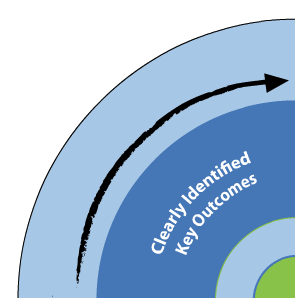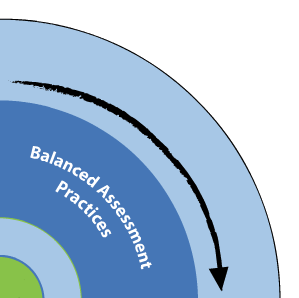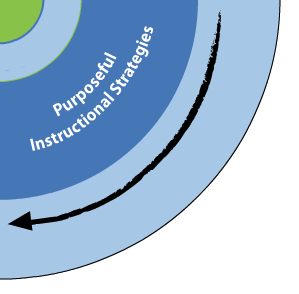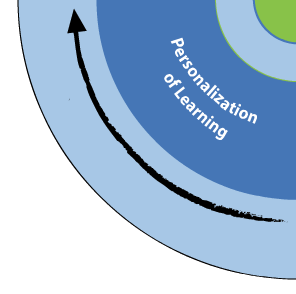Background Knowledge
Page Navigation
(Click to jump to section)
| Brief Explanation | Research | Characteristics of a Skilled Reader | Clearly Identified Key Outcomes | Balanced Assessment Practices | Purposeful Instructional Strategies | Personalization of Learning |
Brief Explanation
Background knowledge involves bringing personal knowledge, gained from experience, to the text and, at the same time, using information from the text in order to construct meaning while reading. The reader accesses the author’s meaning but also adds to that meaning through personal interpretation (Fountas & Pinnell, 2001).
Research
- What students already know about the content (their background knowledge) is one of the strongest indicators of how well they will learn new information relative to the content. There is a relationship between background knowledge and achievement (Nagy, Anderson, & Herman, 1987; Tobias, 1994).
- Relating new vocabulary and reading to previous experiences frequently leads to increased reading comprehension (Carr and Wixson, 1986).
- By accessing their background knowledge, or schema, students can create a frame of reference for what they are about to read (Anderson & Pearson, 1984). Schema can be described as the abstract mental frameworks that organize knowledge into memory.
- As students learn new information, they connect new ideas with their prior knowledge. By teaching students different ways to activate what they already know about a topic, you are helping them build a bridge between their existing knowledge and the text. In addition, they may reorganize their schema to incorporate new information into the framework. If students have prior knowledge about a specific topic, that information will allow them to approach the topic with confidence, make inferences as they read, and focus on the big ideas in the text rather than getting lost in the details (Brozo & Simpson, 1995).
- “Research consistently revealed a strong reciprocal relationship between prior knowledge and reading comprehension. The more one already knows, the more one comprehends; and the more one comprehends, the more one learns new knowledge to enable comprehension of an even greater and broader array of topics and texts.” (Fielding & Pearson, 1994). Prior knowledge and new information are connected as students make predictions and re-adjust them in an ongoing fashion throughout the reading process.
- Having completed the reading of a text, it is critical to re-visit the students’ initial thoughts about the topic. “When students revisit predictions to confirm and/or adjust them, add new understandings to their brainstorming or categories, and adjust early ideas, they get the powerful message that activating prior knowledge is useful and important, and enables students to observe how much they have learned.” (Laura Robb, 2000, p. 118).
Characteristics of a Skilled Reader
With
Increasing
Sophistication
- Actively engage and interact with the text before, during, and after reading so they can grapple with the meaning
- Activate their prior knowledge – connect what they already know before, during, and after reading.
- Set a purpose for reading
- Can represent information from a text onto a graphic organizer before, during, and after reading.
- Consider the writing from the author’s point of view.
- Enjoy reading and are aware of its advantages.
- Are interested and curious about topics and content in texts and read to find out more – they are motivated.

Clearly Identified Key Outcomes
Use your programs of study for curriculum outcomes related to background knowledge.
Please refer to CESD’s Essential Outcomes work if you are using the previous Alberta Curriculum (Grade 7+).
Here is the New Alberta ELAL Curriculum, from the New Learn Alberta website, laid out like a scope and sequence.

Balanced Assessment Practices
- It is the teacher’s responsibility to have an understanding of students’ background knowledge in order to plan accordingly and design learning activities and environments that build on the background knowledge that students already have – so that they can connect their new learning/reading to what they already know/understand. The purpose of this section is not to assess student’s background knowledge, per say, but rather to inform your teaching practice and planning.
- Here are some examples of how teachers can gain an understanding of their students’ background knowledge:
- Journaling – prior to beginning a new topic or unit
- Conversations with students
- KWL charts, anticipation guides, graphic organizers (see pre- strategies below for more ideas)

Purposeful Instructional Strategies
PRE
- Have students share what they know about the topic and personal connections to the reading. If students do not have an adequate amount of background knowledge, you must develop it before beginning.
- Build background knowledge and life experience by exposing students to a wide variety of literature within the classroom – also, create life experiences in the classroom using demonstrations, field trips, virtual field trips, videos, guest speakers, etc.
- Teacher modeling of strategies to activate prior knowledge – think aloud as you predict, brainstorm and question before beginning the book
- Predicting will heighten engagement and understanding because the student feels compelled to confirm his thinking. Effective readers continually refine their predictions based upon the information that they are given.
- Various strategies to activate prior knowledge, including but not limited to:
- Anticipation guides
- Semantic mapping (graphic organizers)
- Prediction – what students think they will learn from a passage before they read it
- Predicting and confirming charts (Reithaug)
- Word-web, brainstorming to activate prior knowledge
- FLASH strategy (Ellis, 1993)
- Focus on the topic
- Look for familiar information in titles, pictures or the text
- Ask questions you may have about the topic
- See what is connected. Think about what you already know about the topic
- Hypothesize what might happen in the text
- Text previewing
- Graphic Organizers: KWL charts, Venn Diagrams, charts
- Use of technology to build background knowledge – such as showing a youtube clip to fill in background information
DURING
-
- Have students highlight or flag content/ideas as they read
- Verify and revise predictions while reading
- Response to anticipation guide
- Add to graphic organizers while reading
- Questioning and reflecting while reading
- Stopping/pausing during reading to create experiences that build background knowledge
- Help students distinguish between first and second draft reading (Gallagher, 2004) In first draft reading, students are experiencing a text for the first time. Second draft reading allows students the opportunity to appreciate more subtle elements of the reading and to make deeper, more meaningful connections with the text.
POST
- Re-visit the students’ initial ideas about the subject.
- Review predictions
- Complete charts and graphic organizers
- Students write in their journals about newly gained knowledge
- Strategies listed in the metacognition section of the reading framework would be useful here





Personalization of Learning
- Pre-teach vocabulary or concepts on an individualized or small group basis as required
- Creating experiences that build background knowledge in a variety of ways – addressing a variety of learning styles
- Pre-reading texts to students